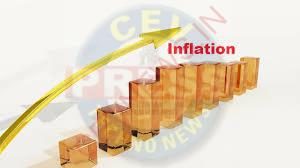COST INFLATION INDEX- ALL YOU NEED TO KNOW
Prices of goods increase over time, resulting in a fall in the purchasing power (quantity of goods that one unit of money can buy) of money. If two units of goods could be bought for Rs 100 today, tomorrow only one unit might be available for Rs 100 due to inflation. Cost Inflation Index (CII) is used to estimate the increase in the prices of goods and assets year-by-year due to inflation.
Why is Cost Inflation Index calculated
Cost Inflation Index is calculated to match the prices to the inflation rate. In simple words, an increase in the inflation rate over time will lead to a rise in the prices.
Who notifies the Cost Inflation Index
The Central Government specifies the cost inflation index by notifying in the official gazette.
Cost Inflation Index = 75% of the average rise in the Consumer Price Index* (urban) for the immediately preceding year.
*Consumer Price Index compares the current price of a basket of goods and services (which represent the economy) with the cost of the same basket of goods and services in the previous year to calculate the increase in prices.
What is the current Cost Inflation Index
| Financial Year |
Cost Inflation Index (CII) |
| 2001-02 (Base year) | 100 |
| 2002-03 | 105 |
| 2003-04 | 109 |
| 2004-05 | 113 |
| 2005-06 | 117 |
| 2006-07 | 122 |
| 2007-08 | 129 |
| 2008-09 | 137 |
| 2009-10 | 148 |
| 2010-11 | 167 |
| 2011-12 | 184 |
| 2012-13 | 200 |
| 2013-14 | 220 |
| 2014-15 | 240 |
| 2015-16 | 254 |
| 2016-17 | 264 |
| 2017-18 | 272 |
| 2018-19 | 280 |
| 2019-20 | 289 |
| 2020-21 | 301 |
| 2021-22 | 317 |
| 2022-23 | 331 |
How is Cost Inflation Index used in Income Tax
Long-Term Capital Assets are recorded at cost price in books. Despite increasing inflation, they exist at the cost price and cannot be revalued. When these assets are sold, the profit amount remains high due to the higher sale price as compared to the purchase price. This also leads to a higher income tax.
The cost inflation index is applied to the long-term capital assets, due to which purchase cost increases, resulting in lesser profits and lesser taxes to benefit taxpayers. To benefit the taxpayers, the cost inflation index benefit is applied to the long-term capital assets, due to which purchase cost increases, resulting in lesser profits and lesser taxes.
What is the concept of the base year in Cost Inflation Index
The base year is the first year of the cost inflation index and has an index value of 100. The index of all other years is compared to the base year to see the increase in inflation percentage. For any capital asset purchased before the base year of the cost inflation index, taxpayers can take the purchase price higher of the “actual cost or Fair Market Value (FMV) as on the 1st day of the base year. Indexation benefit is applied to the purchase price so calculated. FMV is based on the valuation report of a registered valuer.
Why is the base year of Cost Inflation Index changed to 2001 from 1981
Initially, 1981-82 was considered as the base year. But, taxpayers were facing hardships in getting the properties valued which were purchased before 1st April 1981. Tax authorities were also finding it difficult to rely on the valuation reports. Hence, the government decided to shift the base year to 2001 so that valuations can be done quickly and accurately.
So, for a capital asset purchased before 1st April 2001, taxpayers can take higher of actual cost or FMV as on 1st April 2001 as the purchase price and avail benefit of indexation. You can read the detailed benefits of the change in the base year
How is indexation benefit applied to long-term capital assets
When the indexation benefit is applied to “Cost of Acquisition” (purchase price) of the capital asset, it becomes “Indexed Cost of Acquisition”.

